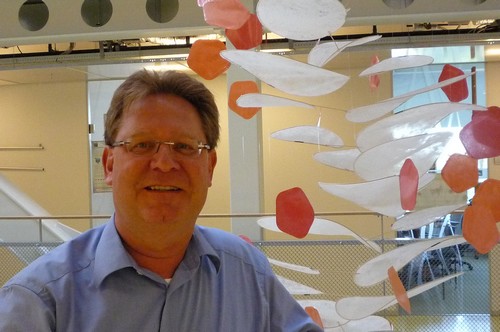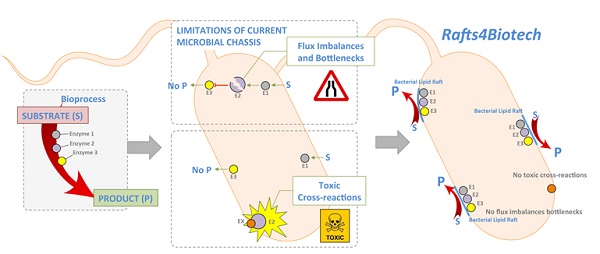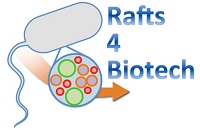Big grant for rafting on a bacterial cell
University of Groningen microbiologists are participating in a project which has just been awarded some EUR 7.4 million by the highly competitive European Horizon 2020 programme. The aim is to use ‘lipid rafts’, parts of cell membranes, to produce useful products or break down pollutants.

‘This is a very new and exciting approach’, says University of Groningen Professor of Molecular Genetics Oscar Kuipers. His group is part of a European consortium of academic and industrial scientists who are aiming to develop the use of ‘ lipid rafts ’. These occur frequently in eukaryotic cells, cells like those in our body with a nucleus and various other cell compartments or ‘organelles’. ‘But their existence in bacteria has only been described recently’, explains Kuipers.
A lipid raft is a part of the membrane where certain processes are concentrated. They form microdomains, with a composition that is slightly different from that of the rest of the cell membrane. ‘These lipid rafts can confine certain processes to the surface of the cells. And it is possible to send proteins to these compartments using specific tags, made up of known amino acid sequences’, Kuipers explains. Furthermore, the rafts sometimes have invaginations to increase their surface area.
This makes these rafts rather useful for microbiologists. When they engineer bacteria to produce a useful product, like an antibiotic, this can be toxic for the cell. By confining the production to the rafts, the toxicity is reduced. One part of the project is the production of certain types of new antibiotics using these rafts. ‘Our job will be to produce nisin and similar antimicrobial peptides using this method’, says Kuipers.

Other participants will use the rafts to produce lipid compounds for cosmetic uses, such as beta-carotene, vitamin A or vitamin B. A final application is the use of lipid rafts to degrade toxic products, like 1,2,3-trichloropropane (TCP). This industrial precursor is toxic and accumulates in food and drinking water. ‘The breakdown products of TCP are also toxic, which makes biodegradation difficult. But if we use engineered rafts, it could be possible.’
These applications will also require a better understanding of bacterial lipid rafts, and the development of efficient methods for sending specific proteins to a raft. This is also part of the project. ‘So far, very few papers have been published on these topics. It is a very new approach, with a lot of potential.’

The University of Groningen will get funding for a PhD student and a postdoc, plus some money for equipment, altogether totalling about EUR 630,000. Twelve partners from all over Europe are involved in the project.
| Last modified: | 19 September 2017 12.46 p.m. |
More news
-
16 April 2024
UG signs Barcelona Declaration on Open Research Information
In a significant stride toward advancing responsible research assessment and open science, the University of Groningen has officially signed the Barcelona Declaration on Open Research Information.
-
02 April 2024
Flying on wood dust
Every two weeks, UG Makers puts the spotlight on a researcher who has created something tangible, ranging from homemade measuring equipment for academic research to small or larger products that can change our daily lives. That is how UG...
-
18 March 2024
VentureLab North helps researchers to develop succesful startups
It has happened to many researchers. While working, you suddenly ask yourself: would this not be incredibly useful for people outside of my own research discipline? There are many ways to share the results of your research. For example, think of a...

